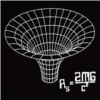Octane 2 Hardware schematics and assembly drawings
hi All,
I am searching for Octane 2 Hardware schematics and assembly drawings but finding nothing so far on the web or Wikie. My first question is has this stuff ever been released.? If yes; a pointer to source please.
I need any information how the Octane 2 is put together. How the frame (main enclosure) electronics is hooked up details of any wiring loom, wiring diagrams, connector pin outs etc. The sort of thing required to trace signals with a DVM pin to pin (cold system) or with a scope or logic analyzer, classic hardware support gen.
I also need full hardware board gen such as any schematics, technical description etc of the IP30 processor tray (motherboard?) and the Vpro V10 and V12 graphics trays, not forgetting the SCSI back plane and X-Bow (version 1.4) (have I missed out anything from the list?)
Appreciate any help on this as still feeling my way into this Octane 2 box.
OBB

hi All,
I am searching for Octane 2 Hardware schematics and assembly drawings but finding nothing so far on the web or Wikie. My first question is has this stuff ever been released.? If yes; a pointer to source please.
I need any information how the Octane 2 is put together. How the frame (main enclosure) electronics is hooked up details of any wiring loom, wiring diagrams, connector pin outs etc. The sort of thing required to trace signals with a DVM pin to pin (cold system) or with a scope or logic analyzer, classic hardware support gen.
I also need full hardware board gen such as any schematics, technical description etc of the IP30 processor tray (motherboard?) and the Vpro V10 and V12 graphics trays, not forgetting the SCSI back plane and X-Bow (version 1.4) (have I missed out anything from the list?)
Appreciate any help on this as still feeling my way into this Octane 2 box.
OBB






























